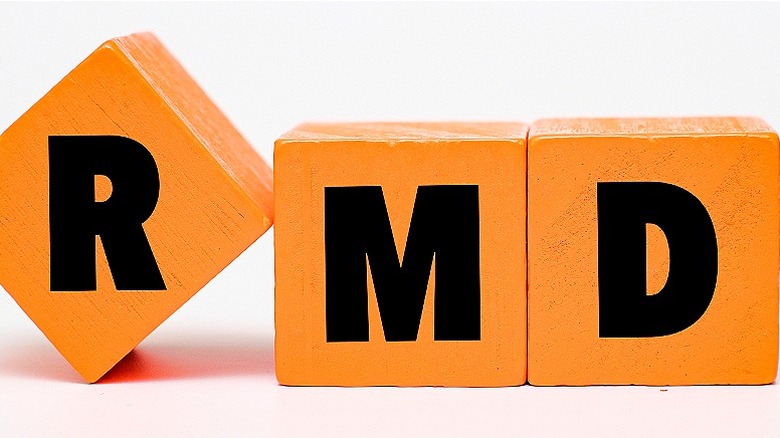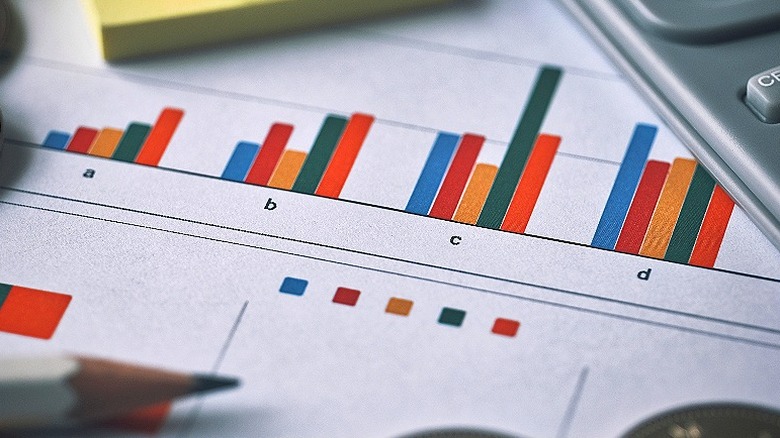Retirees Need To Check These Figures Before The End Of 2024
The end of the year brings plenty of holiday spirit, opportunities for reflection, and a look to the future. As the days get colder, Americans everywhere will be taking stock of what's important to them and exploring ways to improve a variety of lifestyle aspects they enjoy (or perhaps loathe). One area that can't be overlooked is the financial side of things. Plenty of the social and other decisions we make on a regular basis boil down to questions over financial viability.
Retirees are keenly aware of the financial demands that everyday life brings to bear. After leaving the workforce, retired people rely on monthly payments from Social Security, pension funding, and their own savings, accumulated in vehicles like a Roth IRA, 401(k), or elsewhere. These retirement assets support them even after they stop drawing a paycheck from the job they once held.
It's therefore essential that retirees consider a few important figures each year. The final weeks and months on the calendar offer themselves as a solid motivator to square away items on this important financial checklist. From reviewing your budget to tackling the final tasks associated with managing your investment accounts, these are the crucial figures that you must review before the calendar turns over to 2025.
Budget and overall financial health
The end of the year is a great motivator to retool your retirement budget. You'll be able to ring in the new year with an updated outlook on your financial picture and know that you're standing on solid ground. The reality is that budgets change all the time. From inflation to shifting priorities in your personal life, it's unlikely you'll start and end the year looking at the same financial landscape.
Many people think of their budget as a static line-item document, yet it's not something written in stone. Rather, it's fluid and organic, and it shifts alongside your needs and desires. Establishing a budget is an important milestone that anyone can reach in their personal finances, but reevaluating it from time to time is a part of the process.
It's even more important for retirees enjoying their retirement. If you're on a fixed income and looking to protect the underlying assets that give your portfolio strength and lend themselves to financial stability over the coming years, knowing exactly where you stand and how your money is working for you is crucial. Not only should you explore your spending and cash flow, but this is also a good time to check in with your investments, exploring how they've performed over the last year and looking for opportunities to shore up any weaknesses in your total financial well-being.
Retirement account contributions
While it might be commonplace to think of retirement accounts as something you contribute to while you're working and draw down after you retire, it's actually not that simple. Retired people can still contribute to accounts like a Roth IRA, and there are some instances in which this is actually a smart thing to do. You might, for example, continue to work part time to shift the financial responsibility off of your retirement assets for another few years. If you're still generating income through working arrangements, you might want to continue depositing funds into your retirement accounts so that they can generate the same tax advantages you utilized in your younger years.
A Roth might not be the best option here, as the time between deposit and withdrawal won't likely generate the same level of tax-saving benefits. But a traditional IRA can potentially help you write off some of your income when it comes time to file in April. Before the year ends, consider putting a few extra dollars into your retirement accounts if you're still utilizing them for active investment contributions. Your yearly cap resets when the calendar ticks over into January, and you lose any additional contribution availability between your investment figure and the maximum you can deposit. (Read about the Social Security rules that can increase your monthly benefit.)
Required minimum distributions
On the other hand, many retired people will face the need to take required minimum distributions (RMDs) from their tax-advantaged accounts. Traditional IRAs, 401(k) accounts, and inherited Roth IRAs (without the beneficiary being married to the deceased original owner, among limited other circumstances) are just some of the account types that require minimum distributions to begin at 73. Your brokerage firm might calculate and distribute these funds for you automatically, but you might find yourself needing to do it on your own instead.
Whether or not your account provider takes an active role in distributing funds to your checking account, it's a good idea to calculate this on your own so you know how much you're required to take from specific accounts. This can help you manage your tax bill each year by withdrawing less (or more) from other accounts that don't require an RMD, like your Roth IRA. (See what happens if you contribute too much to a Roth IRA.)
The IRS uses the Uniform Lifetime Table (in PDF form here from Fidelity) to calculate how much you must take from RMD-bound accounts; although IRS guidance stipulates other calculation methods depending on specific factors that may factor into your life (like account owners who are married to spouses more than 10 years younger than them). If you're on the hook to withdraw funds from your account, and you haven't hit your required target for the year, doing this before January is a must.
Rebalancing options within your portfolio
Finally, plenty of retirees who have spent years amassing wealth to utilize in their golden years scour financial data to selectively pick great investments. When they reach retirement age, this active role can seem a little redundant. Once you've achieved the target value in your portfolio, there's little need to continue managing its growth, right?
The truth couldn't be any farther from this line of thinking. Managing your investment profile is more important at this stage than perhaps any other time. These funds have to last you the rest of your life, and if you stop managing their performance and experience a dip in value, you might inadvertently run out of funding after spending so long carefully curating your investments. Rebalancing your portfolio is a core component of any investment strategy, and it remains so even in retirement.
In fairness, you might shift many of your assets into index funds and other low-maintenance tools that deliver some personally optimized blend of dividends and growth. Rebalancing might not be hugely important if you've achieved this, but market shifts can still happen, potentially exposing you to a growing weakness in your asset balance. Similarly, you'll eventually start selling assets to liquidate capital to use in everyday retirement life. Carefully choosing what to sell will help keep your portfolio from becoming top-heavy, holding only weaker assets or experiencing too much focus in one sector and exposing you to marketplace shifts.




